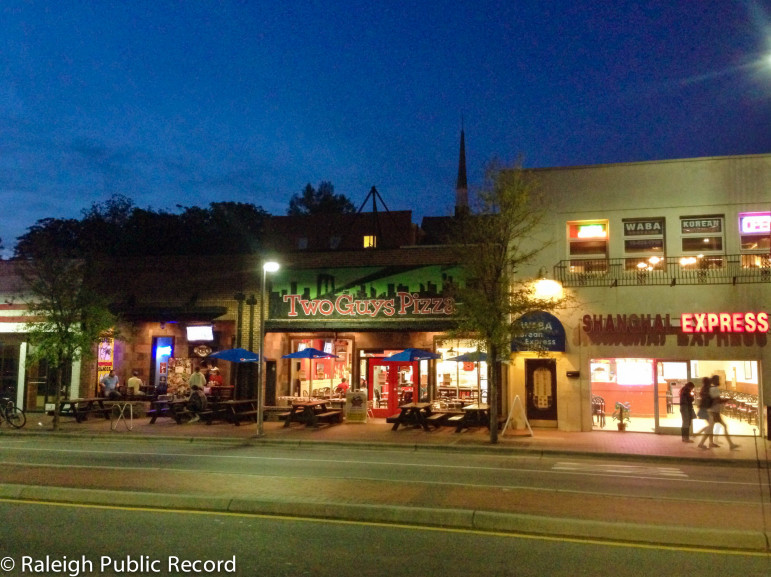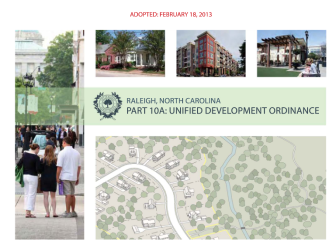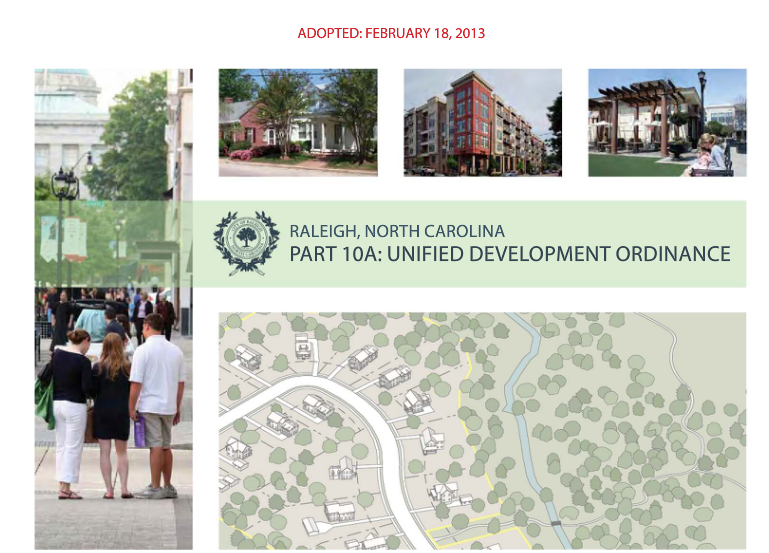City Council members last week held a special work session on a series of amendments proposed for the city’s Unified Development Ordinance.
In place for a year now, the new UDO has led to a series of contentious development projects, including a student housing project on Hillsborough Street that exceeds the area’s recommended story limit.

James Borden / Raleigh Public Record
Several properties on Hillsborough Street, including Two Guys Pizza and Amina’s Cafe, will be torn down for a new student-housing development
All of the items staff presented to council had previously been brought before the Comprehensive Planning Committee, which had recommended their presentation.
These items ranged from the required transitions between residential and nonresidential areas and the potential need for a zoning designation that falls between neighborhood mixed-use and community mixed-use.
Councilor Russell Stephenson, who chairs the Comp Planning Committee, said there is one consistent theme that has come up every time he discusses the UDO with his constituents.
“How are we going to balance sustainable growth with neighborhood preservation?,” Stephenson said.
Councilor Thomas Crowder was concerned that certain amendments or exceptions to the UDO could unfairly tip the scale in favor of growth.
“To me you should always err in favor of neighborhoods,” Crowder said.
“We have to decide, are we going to let the market erode our neighborhoods, or are going to try and protect our neighborhoods?”
As all of the items presented to council were the result of citizen petitions, each of them were tied to examples of past or present development that sparked a lively discussion among the councilors.
Speaking in favor of height restrictions for buildings located in transitional space between a commercial and a residential area, Crowder noted that the architects designing these buildings should have no problem complying with the regulations.
“Designers are creative — I’ve been one since 1973 — you can get creative and make it happen,” Crowder said.
“One of the major tenets of our mission,” as councilors, Crowder said, is to “protect neighborhoods, if we’re willing to do that we should come up with a right solution in doing so.”
Not all Councilors were as engaged in the discussion.

Raleigh’s Unified Development Ordinance
Councilor John Odom noted that the work session’s UDO talk seemed familiar; “We’re discussing the same thing today we did over a two-year period.”
Odom asked staff whether many projects had been built under the UDO guidelines, and was told that they aren’t “really out of the ground” yet, and that staff “hadn’t seen a lot in terms of build results.”
“So we’re talking about changing [the UDO] before we see results?” Odom asked.
Interim Planning & Development director Ken Bowers told council that when it comes to approving any given project, “it’s a judgment call. It’s always a judgment call when you’re legislating; there isn’t any way you can get rid of judgment calls.
“You can’t replace City Council with a CouncilBot 3000,” Bowers said.
Of the nine issues presented to council, which also included height limit guidance and development adjacent to an alley, councilors voted to send all of them to the planning commission for further review.
